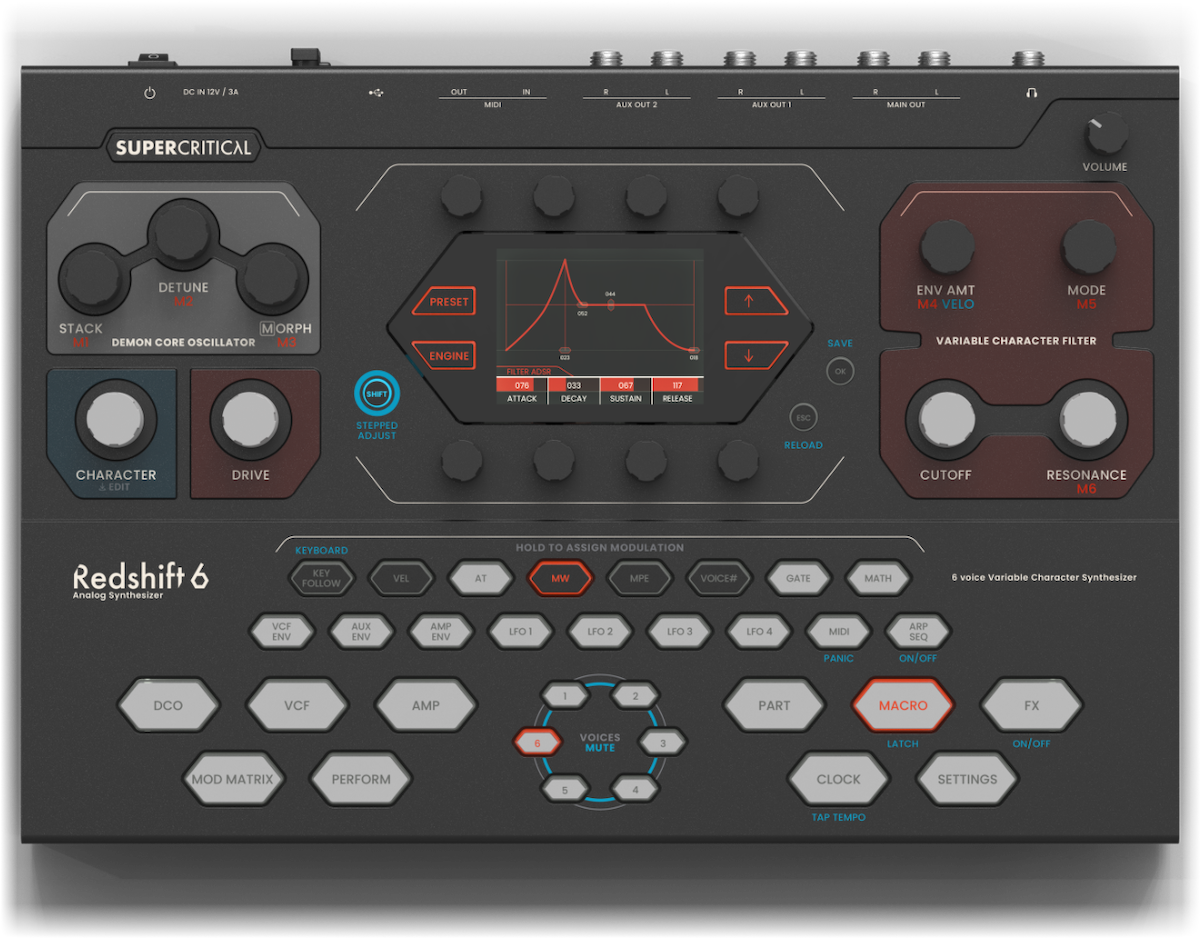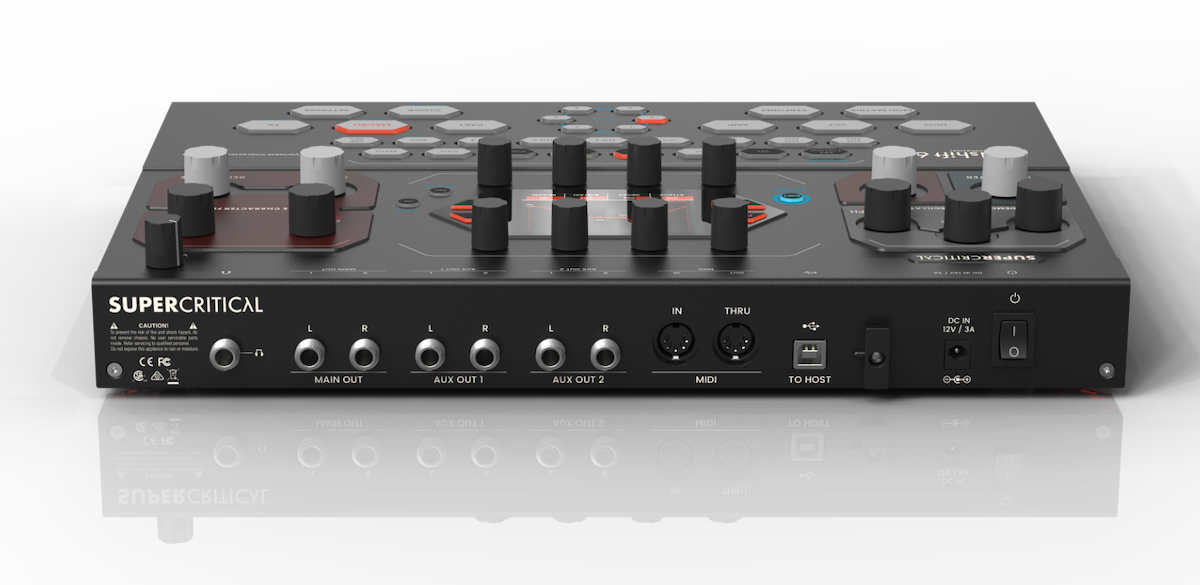NAMM 2024: "To distorted misbehaviour and beyond" - Redshift 6 could well be the unexpected synth star of NAMM season
It's a 'Variable Character Synthesizer' with plenty of digital tricks up its analogue sleeves
NAMM 2024: Supercritical Synthesizers has announced Redshift 6, a synth that certainly looks as cool as it sounds, and seems to have the specs to match. It features both six-part polyphony and multitimbrality – hence the name – and has some super-flexible oscillators at its core, all of which look like making it one of the synths to look out for this year.
It's not due until summer 2024, but Redshift 6 is certainly making a synth statement ahead of this year's NAMM Show. It has a distinctive desktop design, complete with lit-up access to its innards (or so it seems) and even - get this - hexagonal buttons and screen. We'd pay its expected £1,099/$€1,259 asking price for those alone, to be honest.

Supercritical Synths certainly likes its eye-catching product names and Redshift 6 borrows some of its power - namely its oscillators and filter - from older, but no less cool-sounding products from the company: the Demon Core Oscillator and the Neutron Flux Filter.
There's a Demon Core Oscillator behind each of Redshift's 6 voices, with this providing digitally-controlled analogue waveforms. This oscillator is unusual, though, in that the user can choose between various engines, including traditional twin oscillators, supersaw, flanging phase sync, or a transistor organ.
The Neutron Flux filter is an analogue 4-pole, state-variable type, also under digital control, and can "act like almost any classic vintage synthesizer filter and more," according to Supercritical. Whether it can power a Starship is debatable, however.

What is certain is that this digitally-controlled analogue marriage seems to be central to Redshift 6's 'Variable Character Synthesizer' philosophy. It essentially means it has a pure analogue signal path but can go in multiple digital directions, all controlled by way of a software-updatable engine and a lovely-looking screen.
"It can cover the full [sonic] range from almost digitally sterile and clean to distorted misbehaviour and beyond," says Supercritical. "No modelling here – it’s all analogue until the bypassable stereo DSP effects processor."
Want all the hottest music and gear news, reviews, deals, features and more, direct to your inbox? Sign up here.
The multitimbral angle in Redshift 6 is also interesting because you can use the synth in a single sound mode, with all six notes of polyphony accessible, or in a six-part mode with six different sounds, all monophonic. Or use any combination of sounds versus polyphony in between, including a classic vintage poly dual-layer mode with two voices, each with three parts of polyphony.
As if that's not enough - and to slightly muddy the polyphony water - each of the six voices can also operate as a paraphonic voice with up to 16-note paraphony. Paraphony verses polyphony - there's a feature right there.
Redshift 6 also has plenty of modulation action built in, MPE support, and DSP effects. There are two main plus four auxiliary outputs, so you can presumably assign one sound to each output, which could be very cool indeed.
Like we say, though, you'll have to pay over four figures of whatever currency you use, and wait until summer for Redshift 6, but we'll be getting our hands on one for review as soon as we can.
There's more info at the Supercritical Synthesizers website.



Andy has been writing about music production and technology for 30 years having started out on Music Technology magazine back in 1992. He has edited the magazines Future Music, Keyboard Review, MusicTech and Computer Music, which he helped launch back in 1998. He owns way too many synthesizers.
